Categories: Home automation, Sources of light, Sockets and switches
Number of views: 23904
Comments on the article: 1
LED dimmers and their use
 To adjust the brightness of the glow of the lamps, special electronic devices are used - dimmers. And if earlier this concerned only incandescent lamps, then with the advent of LED lamps on the market, there was a need to regulate them. In general, the dimmer function is to lower the average current through the lamp to the desired level, and thus reduce the intensity of the light emitted by it.
To adjust the brightness of the glow of the lamps, special electronic devices are used - dimmers. And if earlier this concerned only incandescent lamps, then with the advent of LED lamps on the market, there was a need to regulate them. In general, the dimmer function is to lower the average current through the lamp to the desired level, and thus reduce the intensity of the light emitted by it.
So, with incandescent lamps are traditionally used triac and thyristor dimmers, which adjust the power supply to the lamp by cutting off part of the phase of the mains voltage. Since incandescent lamps are quite ingenious devices, then dimmers for them are quite simple in design. With LED lamps, the situation is more complicated.
Ordinary LED lamps sometimes contain in their design, in addition to LEDs, also a simple pulse converter circuit, which is designed to interact with a normal sinusoidal mains voltage.
This driver is often very simple, and sometimes even it is missing. If you connect such a lamp through a dimmer, then the control circuit built into its housing will quickly fail, or, in the best case, will not be able to work correctly.
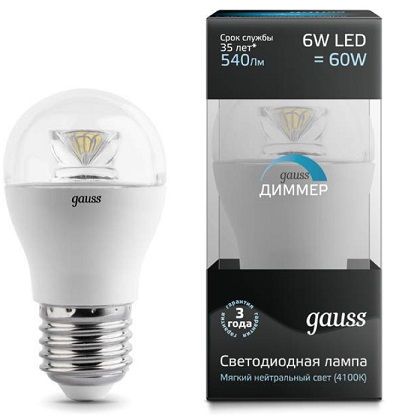
To solve the problem, some manufacturers of LED lamps began to produce lines of special dimmable led bulbs, the driver of which is somewhat complicated, and can easily work even when the lamp is turned on through a conventional dimmer with phase cut-off. Such lamps are more expensive than ordinary ones, and not every buyer is satisfied with this situation.
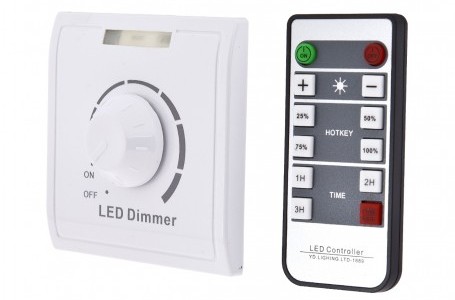
The only alternative is the use of special dimmers designed to directly control LED lamps. These electronic devices themselves are pulse-width modulated converters, and they supply a stabilized voltage to the LED lamp, which the lamp circuit receives without disturbing the normal mode of operation.
Such LED dimmers allow you to smoothly adjust the brightness of the LED lamp, increase efficiency, and extend the life of even the most ordinary LED lamps.
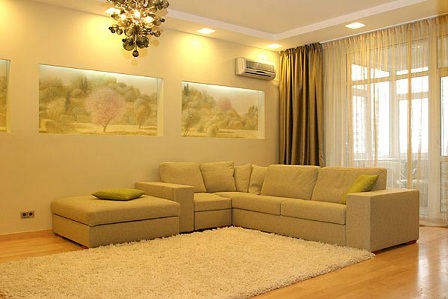
Quite often it happens that lighting a room for a long time would be superfluous, since this affects the excessive consumption of electricity; it’s the dimmer that comes to the rescue modern dimmers have an efficiency of more than 90%. Original design decisions are much easier to implement with dimmers, which may have programmed lighting scenarios.
In the end, the use of dimmers controlled by remote controls simply increases the level of comfort. Finally, the control of light brightness, color change and the implementation of various scenarios are easily integrated into Modern Smart Home systems.
It can be seen from the above that LED dimmers are complex electronic devices, they can turn on the timer light, smoothly start, and even be controlled remotely from the remote control. These dimmers are available in various designs and for various installations.

Dimmers for installation in a mounting box conveniently replace a switch, control is performed either by a button or from an additional unit connected to a dimmer.
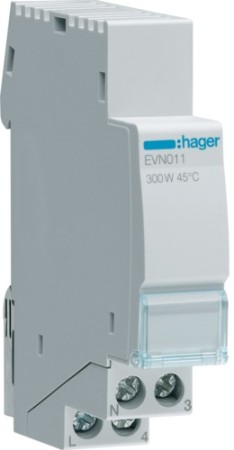
Modular LED Dimmers for installation in a guard to DIN rail allow you to implement various lighting scenarios, and can work in Smart Home systems; they are controlled by remote controls and buttons, or by remote control. Modular dimmers are more expensive than conventional dimmers.
Remote-controlled dimmers come with both radio and infrared controls. In the first case, it is possible to control the device from a distance, while direct visibility is necessary to control with the infrared remote control.
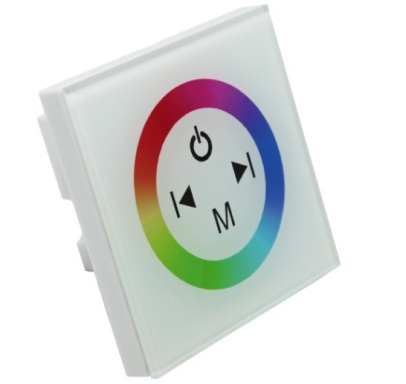
Portable blocks - Another kind of dimmers. Ceiling LED strips are often used together with such dimmable blocks, and spotlights with LED lamps can be connected to them, it is only important to comply with the requirements for the total power.
These blocks themselves are controlled from conventional dimmers, either from special remote panels or from remotes, and sometimes control is carried out by all these methods.
There are mainly four ways to control dimmers:
-
by turning the knob when turning on the lamp and adjusting its brightness is carried out by turning the knob, and turning off is accompanied by a click;
-
using the turn-and-push method, when you can turn it off or on by pressing, and adjusting the brightness by turning, it is not necessary to turn the knob every time to turn it on, just press it and the brightness will immediately be at a predetermined level;
-
key management;
-
touch control; often complemented by a remote control;
Perhaps the only drawback of LED dimmers is the cost of their purchase, which, however, pays off by the efficiency and economy of the lighting systems equipped with them.
It is only important to remember that when buying an LED dimmer and an LED lamp, or a regular dimmer and a dimmable LED lamp, it is advisable to check their joint work directly in the store, where a special stand should be equipped for this purpose.
See also at bgv.electricianexp.com
:
